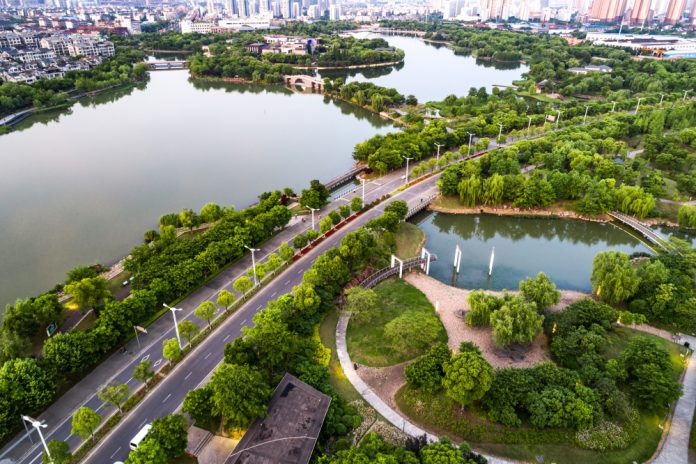Cities across sub-Saharan Africa are grappling with escalating climate risks, including droughts, extreme heat, and frequent floods. These challenges threaten public health, livelihoods, and economies. By 2050, 85% of Africa’s urban residents will experience at least eight days annually with temperatures exceeding 35 degrees Celsius, exacerbating heat-related illnesses and reducing worker productivity. At the same time, rapid land-use changes are accelerating biodiversity loss, weakening essential ecosystem services that sustain urban life.
With the region’s urban population expected to double by 2050, addressing infrastructure gaps has never been more critical. The Green-Gray Infrastructure (GGI) Accelerator is stepping in to support cities in sub-Saharan Africa by enhancing climate resilience through nature-based solutions (NBS) and hybrid green-gray infrastructure. This initiative not only strengthens urban infrastructure but also generates green jobs and delivers public health benefits.
Green-gray infrastructure integrates natural ecosystems like forests, wetlands, and mangroves (“green”) with traditional engineered systems such as seawalls, stormwater drains, and water treatment plants (“gray”). By leveraging the strengths of both approaches, cities can enhance their resilience, protect biodiversity, and support sustainable development.
Read more: Strategies for cities to adapt and thrive in a changing climate
Cities leading the way
The inaugural cohort of the GGI Accelerator comprises 11 cities across seven countries:
Ethiopia: Addis Ababa, Dire Dawa
Rwanda: Kigali, Musanze
South Africa: Johannesburg, Gqeberha
Democratic Republic of Congo: Bukavu, Uvira
Kenya: Nairobi
Ghana: Kumasi
Republic of Congo: Brazzaville
These cities are receiving comprehensive technical assistance to implement context-specific, climate-resilient infrastructure projects that improve livability, equity, and environmental sustainability.
The Accelerator provides end-to-end support in five key areas:
- Policy Guidance & Institutional Development
- Helping cities integrate NBS and GGI into policies and urban planning frameworks.
- Aligning strategies with climate and water resilience goalRaising awareness among governments, donors, and communities through regionally tailored research.
2. Project Development & Implementation
- Conducting risk and opportunity assessments to identify the most effective solutions.
Supporting gender and social equity-responsive planning.Offering technical assistance for species selection, stakeholder engagement, and project monitoring.
3. Funding, Finance & Economic Analysis
- Connecting cities with funders and investors.
- Developing business cases and financial structures to improve project bankability.
- Hosting investor roundtables to unlock sustainable financing.
4. Peer Learning & Capacity Building
- Facilitating knowledge exchange among cities to share best practices.
- Strengthening technical expertise in planning, implementation, and maintenance.
5. Communications & Stakeholder Engagement
- Enhancing visibility for NBS and GGI initiatives.
- Engaging policymakers, communities, and investors to drive adoption and scale solutions.
A collaborative effort
The GGI Accelerator is spearheaded by WRI Africa, Cities4Forests, and the Urban Water Resilience Initiative, with funding from DANIDA and the WRI Ross Center for Sustainable Cities. It also aligns with the SUNCASA project, supported by the Government of Canada.
By equipping cities with the tools, expertise, and financial support they need, the GGI Accelerator is driving a transformational shift toward climate-resilient urban infrastructure in sub-Saharan Africa.
Cities and stakeholders interested in participating or supporting the initiative can engage with the program to advance the adoption of sustainable infrastructure solutions. Together, we can build greener, more resilient, and inclusive urban spaces for future generations.





